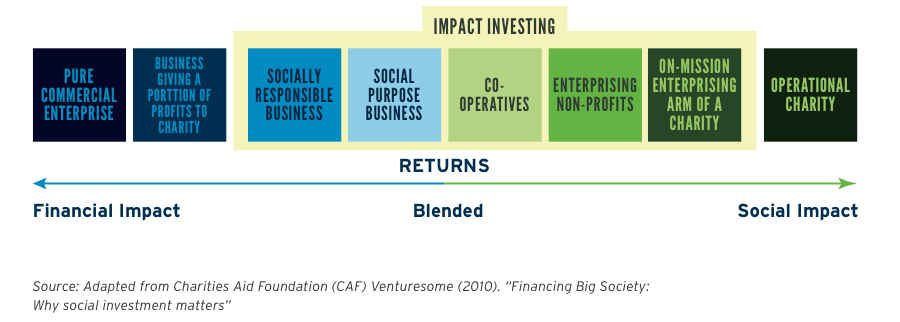Most people have never heard of the term Impact Investing or Mission Related Investing (MRI), terms that are used interchangeably to denote investment products that have some sort of net positive impact on the world socially, economically, or environmentally. The invested funds are allocated to a myriad of impact enterprises around the globe to accomplish the desired initiatives of the organization. These investments may have a positive impact on the world at large, but they also impact your bottom line by providing competitive, market-rate returns for their investors. So, this sounds like a win-win situation, right?
It absolutely is.
Impact Investing is a term first coined by the Rockefeller Foundation back in 2007. The Rockefeller Foundation has given away over 17 billion dollars since its inception while maintaining the size of their endowment, which is an astonishing statistic that proves just how powerful MRI can be. The world is quickly taking notice. Some economists estimate that impact investing could soon (2030 est.) account for 1% of the total invested capital on Wall Street. 1% of the market accounts for around 1 trillion dollars, a vast amount of money that could leverage significant change in every corner of the world, tackling the globe’s largest problems like healthcare and climate change. Today, just 114 million dollars is considered to be invested in the MRI category.
So what do these investments look like?
Impact investments are extremely diverse, and include multiple types of commodities including equity, cash deposits, and structured debt, as well as hybrid forms of the three. Investments will vary greatly depending on asset class, risk appetite, expected returns, sector, and geographic area. I’ll give a few examples of what these investments could look like. An investment banking firm may invest in an affordable housing development by providing finance to the developer, structuring the debt from construction, or setting up affordable housing trusts to secure developments in the future. A private investor may provide capital to a growing technology incubator focused on strengthening small business in a developing country. A fund manager may take equity in a waterless toilet manufacturing company that provides developing countries in sub-saharan Africa with much needed rest facilities. A large financial institution may provide funds to a microfinance organization working to catalyze economic activity in Rust Belt America. The opportunities are truly endless, as is the impact that could be leveraged.
Impact investing still remains hard for the average investor to become involved, but there are several large mission related investment funds to be joined. The Global Impact Investing Network (GIIN), a firm with roots originated from the Rockefeller Foundation, provides a catalog of all the category’s largest funds and players, as well as a measuring system of performance.
This emerging field is more of a pivotal shift for the thousands of social impact organizations struggling to find funding and financing. Thousands of these organizations have turned to traditional lenders, like banks, for years, leaving organizations drowning in debt. Thousands spend hours applying for grants only to be left penniless after hours of application work. So before you turn to the bank or start looking for grants, give the impact investment funding a try. Who knows? This could be the perfect source of funding that will propel your initiative forward. You’ll never know until you try. Until next time my friends, thanks for reading!

Yours In Service,
Monique
